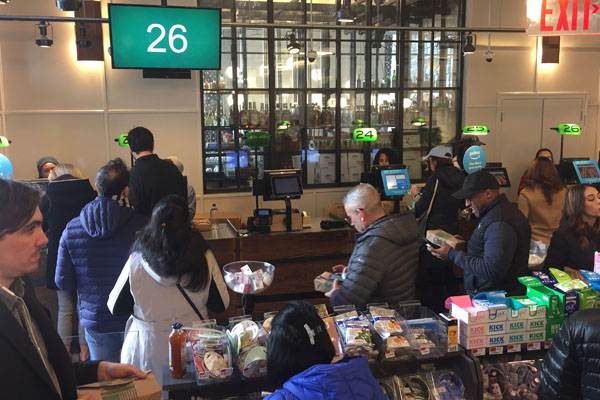Line Management, Jockeying and Happier Customers

Making Customers Happy Even When There are Lines
Nothing scares retail customers more than seeing a long line at checkout. No one likes waiting — without knowing that there’s an end in sight.
Is there a way to improve the retail customer experience even when there are lines?
There’s a Science Called Queue Theory
- Richard Larson, long-time Mitsui Professor of Engineering Systems and Civil and Environmental Engineering at MIT, is considered a key figure in the field of queue psychology — that’s the study of how to make waiting bearable (maybe even enjoyable!).
Customers must believe their patience will pay off in order to have a happy line experience. They must believe in the line system’s efficiency and fairness. They must have signs of hope–the train is coming; the call will be answered in 12 minutes, the checker will still be checking upon arrival.
What Does Jockeying Have to Do with Lines?
Queuing Theory studies line behaviors and has identified one called jockeying. That’s where people evaluate the lines, determine they’re in the “wrong” one and switch to a different line in an attempt to check out sooner.
Jockeying behavior can result in selecting an even worse line that slows down the entire checkout process. That’s bad for the individual customer and the retail location, as a whole.
Serpentine Lines Eliminate Jockeying and Promote Social Fairness
One long line, known as a serpentine line, is the most effective customer line system. Think about it: if one checker calls for assistance, it doesn’t impact any particular group of customers. The serpentine line keeps moving as it directs customers to registers that are working.
In addition to seeing other lines moving faster, there’s another line frustration: seeing someone arrive later but being served sooner. Serpentine lines illustrate the law of first come, first served and customers like that sense of justice!
But that Line Still Looks Long!
People still don’t like waiting in line even if it is fair. What else can a retailer do? Savvy retailers use techniques ranging from providing information via signage, offering additional purchase opportunities at checkout, music and the like. A 2016 Millward Brown study reports 84% of grocery shoppers said watching digital signs helped time pass more quickly. That’s a huge number of shoppers who would be entertained and not mind waiting!
Take a look at this CPS’ QuikLine image. Customers are waiting in a serpentine line and are notified when the next cashier is available. That’s where effective automated line management meets both the customer’s desire for fair and efficient, as well as the retailer’s objective of happy customers.
